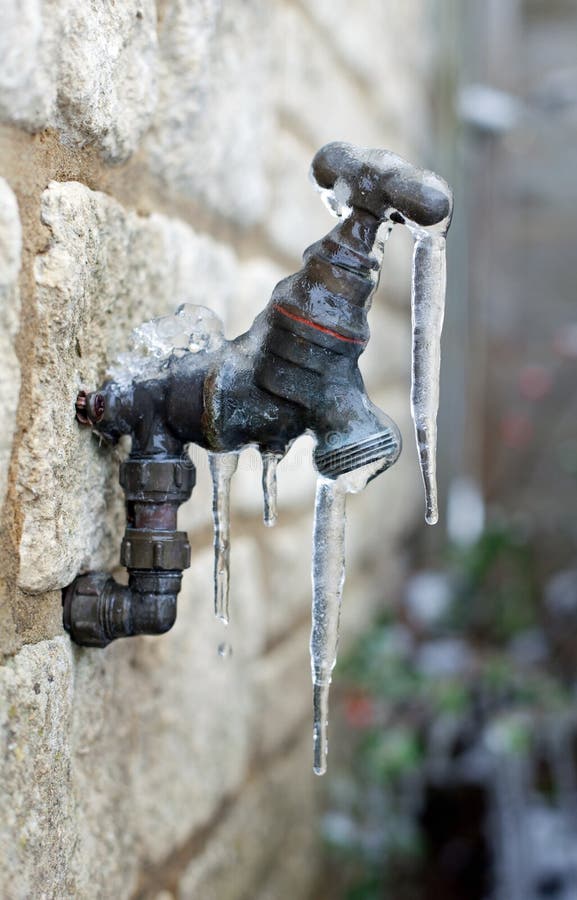We have discovered the article about How To Avoid Freezing Pipes listed below on the internet and accepted it made sense to relate it with you on this site.

Cold weather can wreak havoc on your plumbing, specifically by freezing pipelines. Below's exactly how to prevent it from taking place and what to do if it does.
Intro
As temperatures decline, the danger of icy pipes rises, potentially leading to expensive repairs and water damages. Understanding exactly how to prevent frozen pipelines is essential for home owners in cool environments.
Recognizing Frozen Pipes
What creates pipelines to ice up?
Pipes ice up when exposed to temperatures listed below 32 ° F (0 ° C) for extended durations. As water inside the pipelines freezes, it expands, taxing the pipe wall surfaces and possibly causing them to rupture.
Threats and damages
Icy pipelines can bring about supply of water disruptions, property damages, and pricey repair services. Burst pipes can flooding homes and trigger comprehensive structural damages.
Indicators of Frozen Piping
Recognizing frozen pipelines early can avoid them from bursting.
How to recognize frozen pipes
Seek reduced water flow from taps, uncommon odors or sounds from pipes, and noticeable frost on exposed pipes.
Avoidance Tips
Insulating prone pipelines
Cover pipelines in insulation sleeves or use heat tape to shield them from freezing temperature levels. Concentrate on pipelines in unheated or exterior areas of the home.
Heating methods
Maintain interior spaces adequately warmed, particularly areas with pipes. Open cupboard doors to allow cozy air to circulate around pipelines under sinks.
Protecting Outside Pipes
Garden pipes and outside faucets
Separate and drain pipes yard hose pipes prior to winter season. Mount frost-proof spigots or cover outside faucets with protected caps.
What to Do If Your Pipelines Freeze
Immediate actions to take
If you presume frozen pipes, keep faucets available to relieve pressure as the ice melts. Use a hairdryer or towels soaked in hot water to thaw pipes gradually.
Long-Term Solutions
Architectural changes
Take into consideration rerouting pipes far from outside wall surfaces or unheated locations. Add additional insulation to attics, basements, and crawl spaces.
Updating insulation
Purchase top quality insulation for pipelines, attic rooms, and walls. Appropriate insulation helps maintain regular temperatures and decreases the threat of frozen pipes.
Final thought
Preventing icy pipes calls for proactive actions and quick feedbacks. By comprehending the reasons, indications, and safety nets, property owners can shield their plumbing during winter.
5 Ways to Prevent Frozen Pipes
Drain Outdoor Faucets and Disconnect Hoses
First, close the shut-off valve that controls the flow of water in the pipe to your outdoor faucet. Then, head outside to disconnect and drain your hose and open the outdoor faucet to allow the water to completely drain out of the line. Turn off the faucet when done. Finally, head back to the shut-off valve and drain the remaining water inside the pipe into a bucket or container. Additionally, if you have a home irrigation system, you should consider hiring an expert to clear the system of water each year.
Insulate Pipes
One of the best and most cost-effective methods for preventing frozen water pipes is to wrap your pipes with insulation. This is especially important for areas in your home that aren’t exposed to heat, such as an attic. We suggest using foam sleeves, which can typically be found at your local hardware store.
Keep Heat Running at 65
Your pipes are located inside your walls, and the temperature there is much colder than the rest of the house. To prevent your pipes from freezing, The Insurance Information Institute suggests that you keep your home heated to at least 65 degrees, even when traveling. You may want to invest in smart devices that can keep an eye on the temperature in your home while you’re away.
Leave Water Dripping
Moving water — even a small trickle — can prevent ice from forming inside your pipes. When freezing temps are imminent, start a drip of water from all faucets that serve exposed pipes. Leaving a few faucets running will also help relieve pressure inside the pipes and help prevent a rupture if the water inside freezes.
Open Cupboard Doors
Warm your kitchen and bathroom pipes by opening cupboards and vanities. You should also leave your interior doors ajar to help warm air circulate evenly throughout your home.

Hopefully you enjoyed our piece on Helpful Tips to Prevent Frozen Pipes this Winter. Thank you so much for finding the time to browse our article. Are you aware of somebody who is truly interested in the topic? Why not share it. Many thanks for taking the time to read it.
Click Here